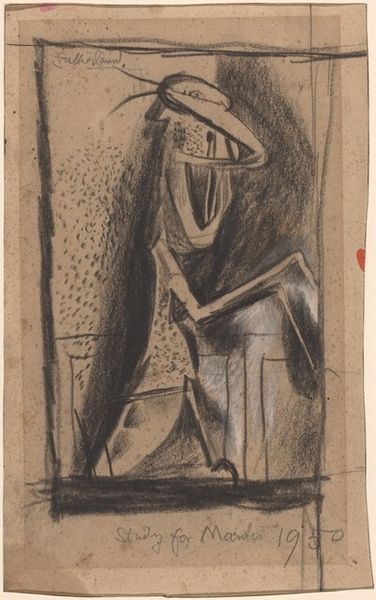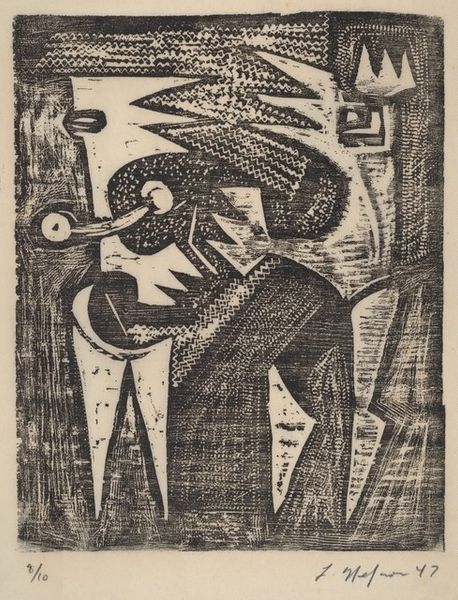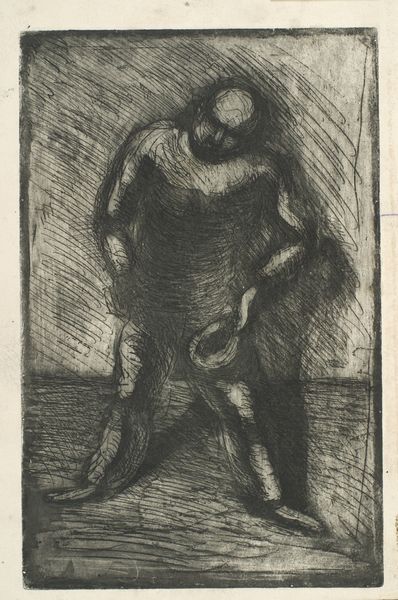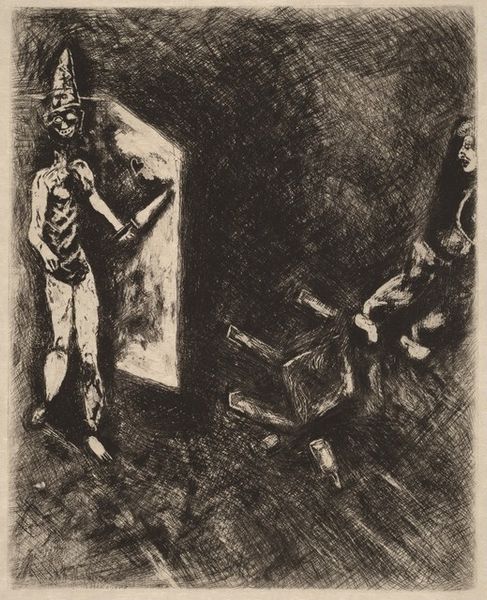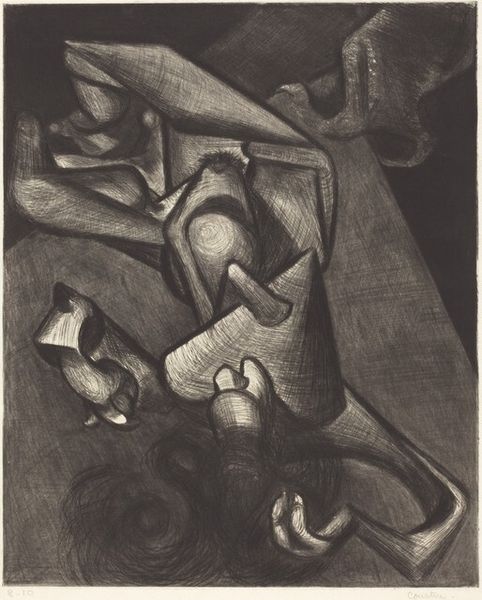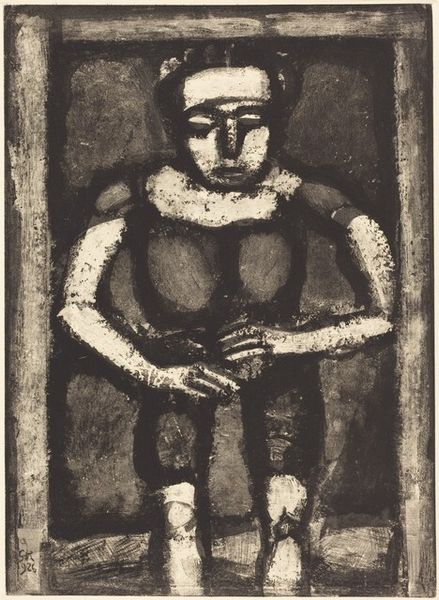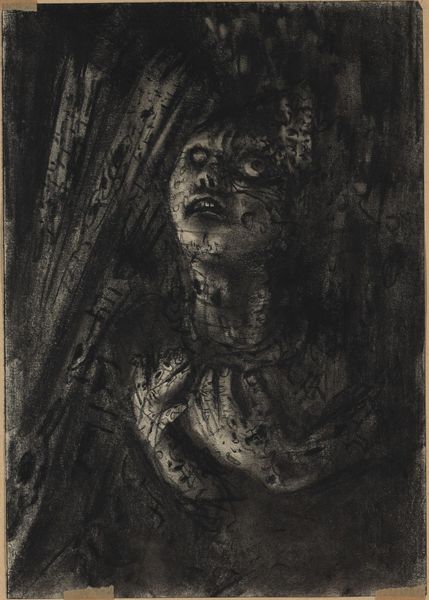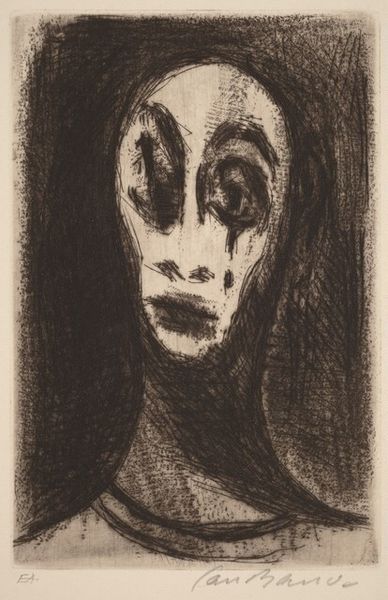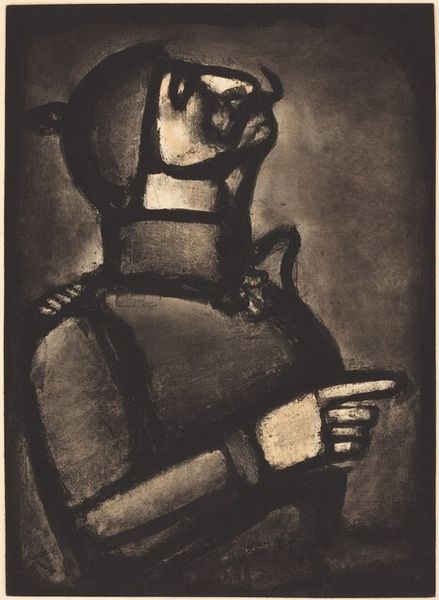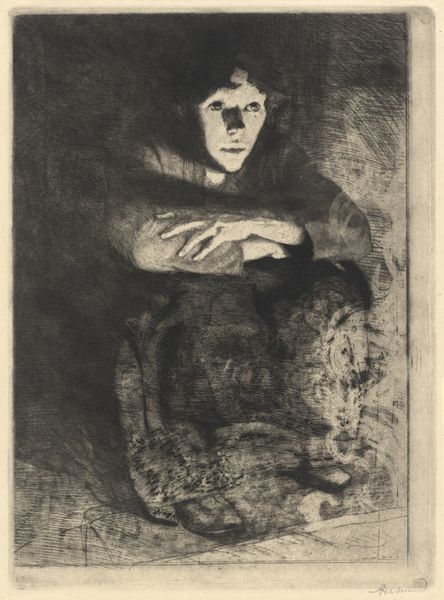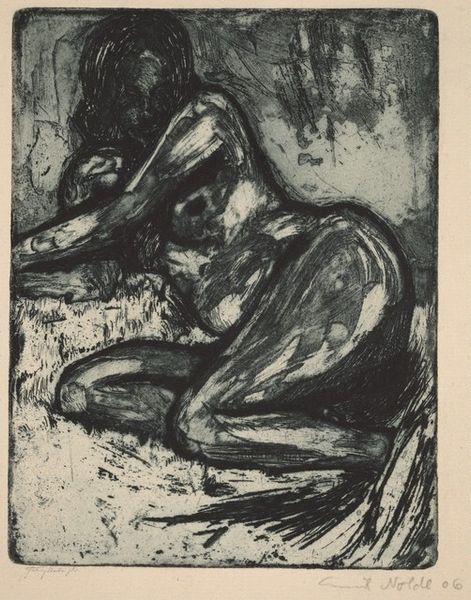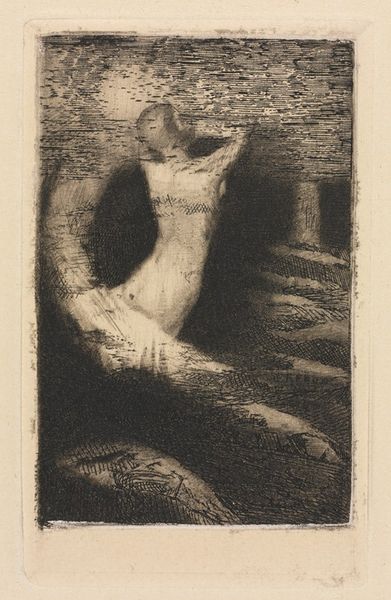
drawing, print, graphite, charcoal
#
portrait
#
drawing
# print
#
charcoal drawing
#
figuration
#
charcoal art
#
pencil drawing
#
graphite
#
mexican-muralism
#
charcoal
Dimensions: plate: 26.7 × 21.2 cm (10 1/2 × 8 3/8 in.) sheet: 44.2 × 29.3 cm (17 3/8 × 11 9/16 in.)
Copyright: National Gallery of Art: CC0 1.0
Curator: This is José Clemente Orozco’s print titled "Clowns (Payasos)," created in 1944, during a period of intense political and social change in Mexico and beyond. Editor: Immediately striking is the dramatic chiaroscuro – the stark contrast of light and shadow really amplifies the sense of unease and…dare I say, barely restrained agony, present within. The charcoal rendering almost seems to claw its way out of the paper. Curator: It's a compelling use of charcoal, indeed. Orozco often worked with materials that allowed for immediacy and bold expression. This print reflects his broader interest in critiquing social and political corruption. The clown figure is a recurring motif. What associations do they have for you in this image? Editor: Clowns historically serve a purpose—to mock authority, to offer satirical commentary, to deflate egos with laughter. But this clown seems stripped bare of that power. Trapped, even. It is bound with this collar device. Orozco's commentary goes beyond a simple mocking—he implicates these figures within a larger system. Is the intent to challenge power, or just to illustrate how broken and cruel such forces actually are? Curator: Contextually, this print could be seen as Orozco's commentary on the political circus of the time. He himself was very engaged with the muralist movement. He was acutely aware of the role of art as a voice for and with the masses. Editor: And to bring this back to the material: notice the weight of the line, the density of the charcoal. The deliberate lack of finish contributes to the message. There's nothing polished or palatable here, this isn't meant for easy consumption or pretty parlor walls. The artistic process really amplifies the rawness of the work, echoing a sense of turmoil both personal and societal. It refuses comfort, demanding engagement. Curator: It’s that directness that makes Orozco so important to understand. And it serves to connect to that wider community still today. Editor: A brutal, unforgettable reflection, materialized in charcoal—raw, challenging, and historically indispensable.
Comments
No comments
Be the first to comment and join the conversation on the ultimate creative platform.
